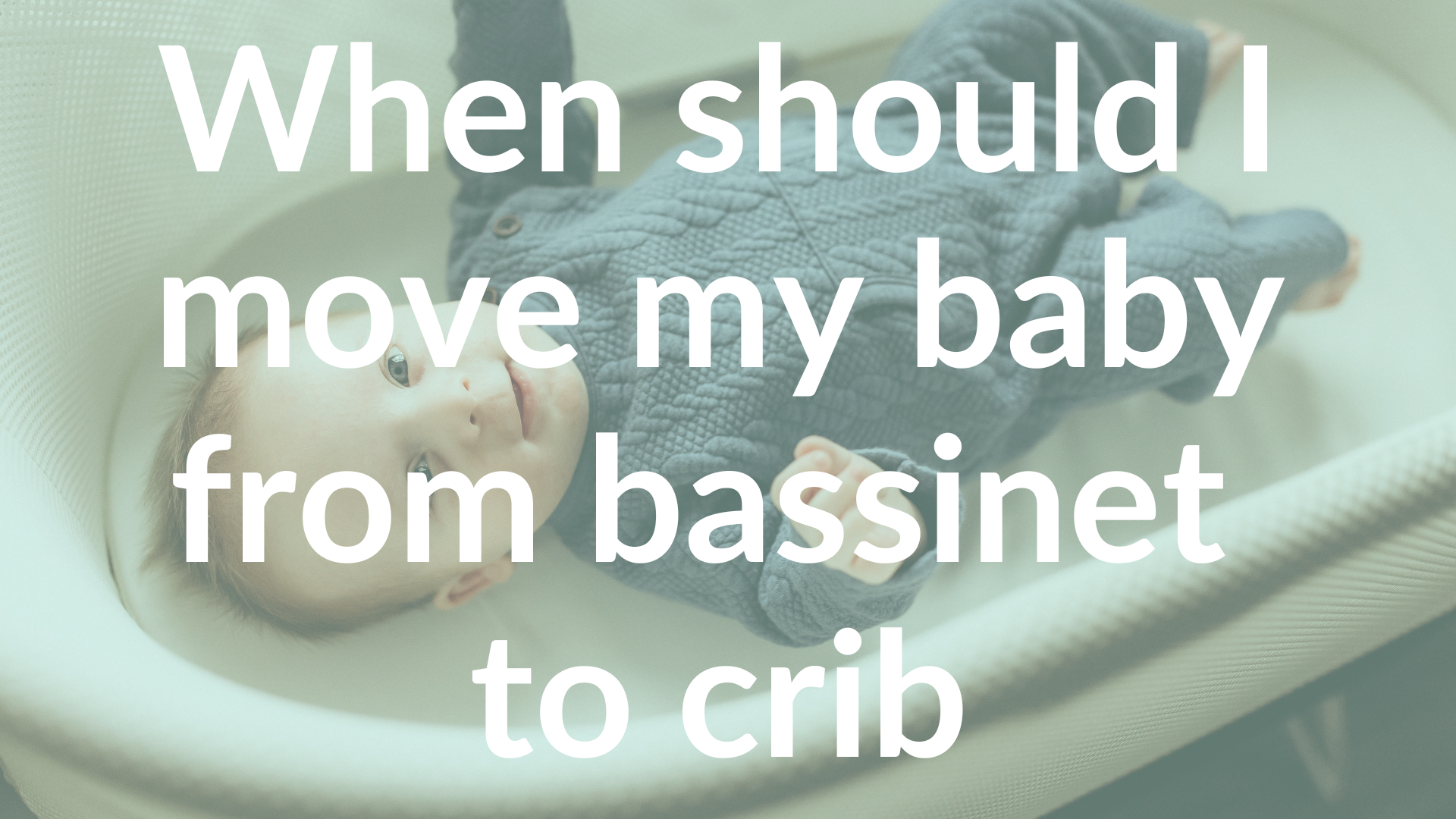When should I move my baby from the bassinet to the crib?
Hey friends,
I know it can be a bit of an emotional thing. The memory of bringing baby home from the hospital still feels new, and all of the sudden we are faced with the decision of whether baby is ready to be moved from the bassinet to the crib.
May as well head off for college too.
Bassinets are actually only created for those first 8-12 weeks.
You may not be feeling mentally or emotionally prepared to move baby from the bassinet to crib. Time flies, and we have feelings about that. That’s okay. It feels too fast. Sure, some newborn days felt like an endless cycle of wake, feed, sleep, wake, feed, sleep with no pause button. But most of those days … cuddles, tiny baby feet, little onesies, the first smile … so no. Nope, not moving you. You can stay in the bassinet and be tiny and adorable forever.
Okay, so that is our heart response. Let’s check in with our head response for a moment.
We knoooooooowwww it’s our responsibility to make sure our babies are sleeping in the safest space possible. Especially because we aren’t watching them during the night. And as they approach 12 weeks, the crib is the safest space for them. So, head response wins this round.
Here are signs that it’s time to move baby to the crib:
Baby is showing signs of rolling. The reason why we have baby moving into the crib by 12 weeks is because this is when they start their rolling development. We want to avoid baby rolling and getting stuck on the side of their bassinet.
Baby is growing. You can check to see if the bassinet is still working by laying baby in the middle of the bassinet, and then making sure there are at least a couple of inches of space around their body. You’ll find that babies start to move around a fair bit in their sleep to find a comfortable spot, so if baby doesn’t have enough space, they will start to wake up. There have been so many babies that start sleeping better just because parents moved them into the crib.
Baby is 12 weeks old. At this point baby can do too much … and they learn new skills quickly. Baby also develops new skills while asleep (don’t you wish we had that super power??), and so while you might think, My baby can’t roll yet. Let’s keep him in the bassinet, they might learn to roll while in their sleep, making the bassinet a hazard.
If your baby meets any of those criteria, it’s time to make the move!
What are some things to consider when making the move to the crib?
Raise baby’s mattress high enough that they are easily accessible, lowering it as baby develops the skill to sit up, pull up, stand up, and climb, so that baby cannot get up on the edge. Since the majority of baby’s weight is in their head, it isn’t safe for them to be able to lean over the crib.
Start the crib transition with night sleep. Bedtime is the easiest time for them to move into the crib, as it is the best time to experience change and the best time to get to sleep. Once baby is sleeping well in their new space, use the cribs for naps too.
Lower baby into the crib in the order of feet, bum, back, head. Do this on an incline. This will help to prevent baby’s Moro reflex from triggering and either feeling startled or waking up as you lay them down.
Safety first. No blankets, toys, bumpers, or mobiles in the crib. Secure furniture and make sure all wires and items in the room are out of arms reach from the crib.
Spend a few minutes each day playing with baby on the floor beside the crib. Do This during wake time, with full, natural light in the room. This will help baby to build positive memories near their new sleep environment, and they will see that you trust the space and have given your stamp of approval.
If you find that your baby is crying when you place them in the crib, check out my YouTube video about supporting their sleep.
And that’s how it’s done! Enjoy this next stage with baby.
Sleep Sweetly,
Anna


